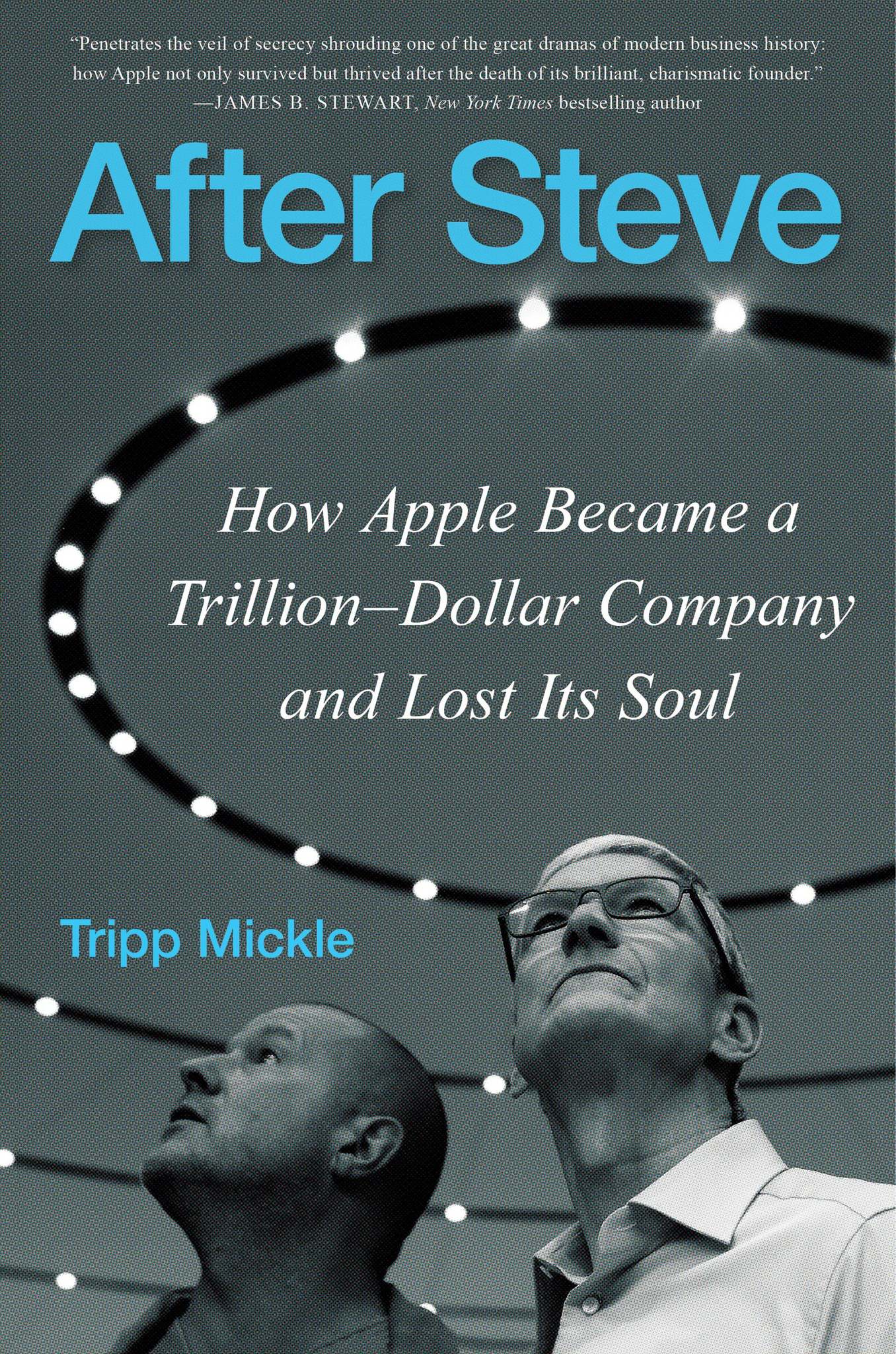Revealed: How Apple's iconic iPod design nearly didn't make it

What you need to know
- Apple this week announced the end of the iPod, one of its most iconic products.
- Excerpts from a tell-all book inside Apple have revealed Jony Ive's design for the first model did not go down well.
- Colleagues had questions about the use of stainless steel, the logo on the back, and the use of the color white.
Apple this week announced the end of the line for the iPod, one of the company's most iconic products. Yet excerpts from a new book inside Apple reveal that Jony Ive's first iconic design didn't go down well and that he faced plenty of internal resistance over some of its most distinctive features.
In his new book After Steve: How Apple Became a Trillion-Dollar Company and Lost Its Soul Tripp Mickle retells the story of how the iPod first came to be. It was Steve Jobs who pressed for Apple to create a portable music player, as "the nascent MP3 market sparked dreams of a next-generation Sony Walkman." The project really got going when Apple's head of hardware engineering, Jon Rubinstein, discovered that Toshiba had created a new type of miniature disk drive that could hold up to a thousand songs, pushing to buy the rights to every disk that Toshiba made.
The first revelation from Mickle's book is that the most iconic design feature of the iPod, its circular click wheel used to scroll through songs and navigate menus, was actually an idea from Apple's head of marketing Phil Schiller and not Jony Ive. Schiller confirmed the story himself just this week, taking to Twitter to reveal he had thought of the wheel as an input, showing off an old Bang & Olufsen DECT cordless phone to Jobs at an early iPod meeting.
Mickle says that Ive was handed the package of ingredients and tasked with creating a design, one that came to him on his daily commute between San Francisco and Cupertino:
The design concept struck Ive during his daily commute between San Francisco and Cupertino. While meditating on how to give the brick of components aesthetic appeal, he imagined an MP3 player in pure white with a back side of polished steel. The metal would feel significant, providing a weight that would convey the amount of work artists had put into the thousands of songs the device held, while the white player and headphones would make the device look simultaneously bold and inconspicuous, planting it between the original black Sony Walkman and its brilliant yellow successors.
Yet while many of us may look back fondly on the design of the iPod, elements of which persisted in later models for years, the idea apparently didn't go down well at the time. Mickle writes that Ive "faced resistance internally," with colleagues questioning him about the use of stainless steel, the molded body, and the fact that Ive wanted to put the logo on the back, rather than the front of the device. They didn't even like the color:
They also expressed doubts about the idea of white rather than the more commonplace black headphones. Despite those competing views, Jobs supported the proposals by Ive and the design team.
Mickle describes how Jony Ive and his design studio favored white because it was "fresh, light, and acceptable," and because it meant they could create just one model and forgo lots of different colors trying to please everyone. But Ive didn't want just any white, so designer Doug Satzger created a new saturated white that Apple called 'Moon Gray.'
Mickle also reveals how another one of the iPod's biggest reasons for its success, namely the distinctive black silhouette adverts that debuted in 2003, were actually an idea from the company's ad agency TBWA/Media Arts Lab, who recognized that the white case was the most unique feature of the iPod:
iMore offers spot-on advice and guidance from our team of experts, with decades of Apple device experience to lean on. Learn more with iMore!
After Apple released the iPod in October 2001, its ad agency, TBWA\Media Arts Lab, considered the white case its most unique feature in a crowded market that included about fifty other portable MP3 players. James Vincent, a Brit at the agency, proposed showing black silhouettes of people wearing white headphones dancing against colorful backgrounds. The spots, which debuted in 2003, were put to songs such as Jet's "Are You Gonna Be My Girl?"
Mickle notes that the combination of these distinctive ads and the arrival of iTunes helped Apple go from selling 1 million iPods in 2003 to more than 25 million just two years later, its annual revenue soaring by 68% to $14 billion, transforming "the beleaguered computer company into a consumer electronics giant."
Despite the unquestionable success of the iPod, Mickle writes that Ive "was disappointed" with the iPod, stating that he had been less central to the product's development than he would have liked. Mickle says that Ive reported to Rubinstein, who rejected lots of Ive's ideas as too expensive, causing him to "bristle." Disliking confrontation and disliking design compromises even more, Mickle says that Ive would simply go around Rubinstein straight to Steve Jobs, with some of the CEO's advisers urging Jobs to stop enabling Ive. Eventually, Rubinstein left to head up Palm, and Jobs streamlined the reporting structure so that Ive reported directly to him, a move Mickle says made him "the second most powerful figure after the CEO."
A story for another day, Mickle goes on to reveal how Apple feared that a rival might make its iPod redundant by combining an MP3 player and a phone into a single device, kicking off Project Purple in 2005, which would eventually lead Apple to the iPhone.
More stories from 'After Steve'
Revealed: Dr. Dre leaking the Apple Beats deal early cost $200 million

Inside Apple like never before.
Tripp Mickle speaks with over 200 former and current Apple executives, telling the dramatic story of Steve Jobs' passing and demonstrating in his words "How Apple Became a Trillion-Dollar Company and Lost Its Soul."

Stephen Warwick has written about Apple for five years at iMore and previously elsewhere. He covers all of iMore's latest breaking news regarding all of Apple's products and services, both hardware and software. Stephen has interviewed industry experts in a range of fields including finance, litigation, security, and more. He also specializes in curating and reviewing audio hardware and has experience beyond journalism in sound engineering, production, and design.
Before becoming a writer Stephen studied Ancient History at University and also worked at Apple for more than two years. Stephen is also a host on the iMore show, a weekly podcast recorded live that discusses the latest in breaking Apple news, as well as featuring fun trivia about all things Apple. Follow him on Twitter @stephenwarwick9
